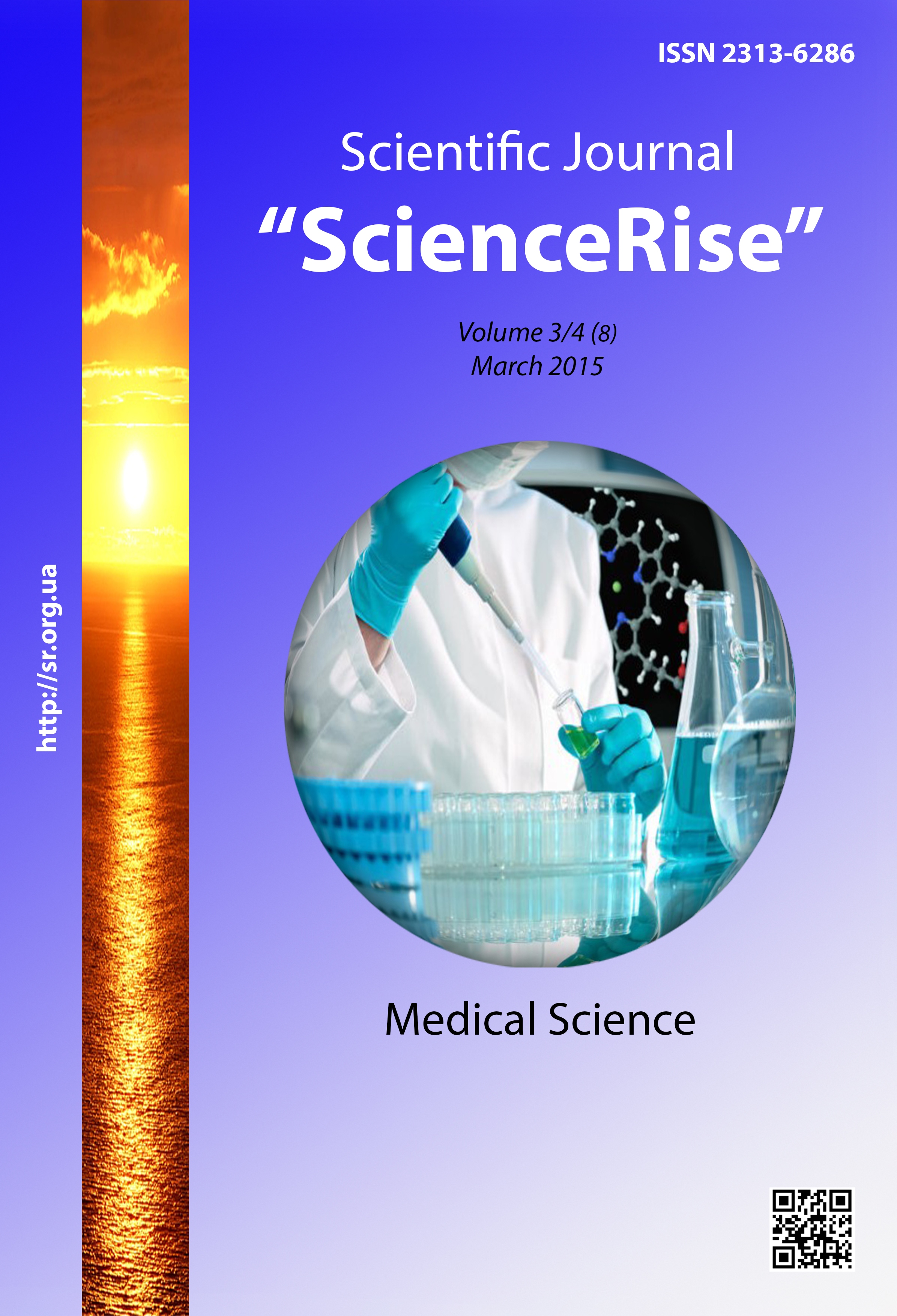Comprehensive analysis of therapeutic effect nucleo cmp forte for injuries inferior alveolar nerve
DOI:
https://doi.org/10.15587/2313-8416.2015.39135Keywords:
mandibular fractures, inferior alveolar nerve, Nucleo CMP, pain, electrometric testAbstract
The aim of our study became a comparative description of main indicators of pain syndrome in patients with mandibular fractures, accompanied by damage of inferior alveolar nerve using conventional treatment scheme, supplemented by application of Nucleo CMP forte.
Materials and methods. In order to achieve the indicated objective, we have performed a surgical interference and further post-surgical treatment of 60 patients with angular mandibular fractures, accompanied by clinical picture of damaging inferior alveolar nerve alveolar nerve.
Results. The use of Nucleo CMP forte completely eliminates unpleasant subjective symptoms such as burning sensation, allodynia (distorted pain), sensation of tingling, cramp (twitching). There was a slight positive dynamics in the complaints of the patients on disesthesive symptoms in the region of the mandible in the comparison group. In the main group disesthesive symptoms at the end of the observation period were missing, and objective symptoms of inferior alveolar nerve dysfunction had a significant regression. In the main group after treatment a significant positive trend for improving the conduction of the inferior alveolar nerve revealed.
Conclusions. Thus, after analyzing the dynamics of complaints and objective data for mandibular fractures in the area of the angle, which is accompanied by damage of the inferior alveolar nerve, it was found that using of Nucleo CMP forte accelerates regression of pain syndrome in the course of treatment. This drug considerably reduces the intensity of manifestations of all kinds of neuropathy connected with inferior alveolar nerve damage
References
Kenbaev, V. O. (2006). Travmatolohyia cheliustno-lytsevoj oblasty. Shymkent, 118.
Tymofieiev, O. O., Viesova, O. P. (2010). Kliniko-patofiziolohichni pidkhody do klasyfikatsii urazhen' v systemi trijchastoho nerva. Sovremennaia stomatolohyia, 4, 100–102.
Karlov, V. A. (2002). Nevrolohyia: Rukovodstvo dlia vrachej. Yzdanye 2-e, pererabotannoe y dopolnennoe. Moscow: OOO «Medytsynskoe ynformatsyonnoe ahentstvo», 638.
Vejn, A. M. (2001). Bolevye syndromy v nevrolohycheskoj praktyke. MEDpress-inform, 368.
Danylov, A.B. (2007). Nejropatycheskaia bol'. Moscow: Borhes, 192.
Barker, R., Bazady, S., Nyl, M.; Skvortsova, V. Y. (Ed.) (2006). Nahliadnaia nevrolohyia: Uchebnoe posobye. Moscow: HEOTAR-Medya, 136.
Yavorskaia, E. S. (2000). Bolevye y parestetycheskye syndromy cheliustno-lytsevoj oblasty: Metodycheskoe posobye po nejrostomatolohyy. Kiev: Naukova dumka, 88.
Downloads
Published
Issue
Section
License
Copyright (c) 2015 Руслан Леонідович Фурман

This work is licensed under a Creative Commons Attribution 4.0 International License.
Our journal abides by the Creative Commons CC BY copyright rights and permissions for open access journals.
Authors, who are published in this journal, agree to the following conditions:
1. The authors reserve the right to authorship of the work and pass the first publication right of this work to the journal under the terms of a Creative Commons CC BY, which allows others to freely distribute the published research with the obligatory reference to the authors of the original work and the first publication of the work in this journal.
2. The authors have the right to conclude separate supplement agreements that relate to non-exclusive work distribution in the form in which it has been published by the journal (for example, to upload the work to the online storage of the journal or publish it as part of a monograph), provided that the reference to the first publication of the work in this journal is included.

